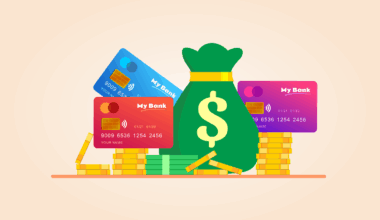How to Conduct Funnel Gap Analysis for Growth Opportunities
Funnel gap analysis is a crucial strategy for identifying growth opportunities within the marketing funnel. This process involves systematically examining each stage of your funnel. To begin, grasp the structure and purpose of your marketing funnel. Understand how potential customers flow from awareness through consideration to the ultimate conversion. Analyze your current metrics: conversion rates, customer acquisition costs, and drop-off rates. These metrics will serve as a baseline for identifying gaps. Utilize analytics tools to visualize conversions at each stage, pinpointing where customers drop out. This allows for targeted analysis and the formulation of robust strategies to mitigate leakages. Furthermore, segment your audience based on behavior and demographics for deeper insights. Conduct surveys or interviews to capture qualitative data regarding customer motivations and objections. This will enrich your quantitative analysis, providing a clearer picture of disconnects. With this valuable information, adjust your marketing strategies to optimize engagement at every stage, ultimately leading to improved conversion rates. Apply your findings continuously to keep your funnel dynamic and responsive to changes in market conditions. Regular reviews ensure your strategies remain effective and aligned with consumer behavior.
Identifying Key Performance Indicators (KPIs)
Understanding the key performance indicators (KPIs) relevant to your funnel is essential for effective gap analysis. KPIs help quantify the performance of each stage of the funnel, making it easier to recognize areas needing improvement. Begin by defining specific KPIs for each funnel stage. For the awareness stage, consider metrics like website traffic and social media reach. In the consideration phase, track lead engagement, such as email open rates and content downloads. Finally, examine conversion metrics, including sales numbers and revenue generated. Assess the historical performance of these metrics to identify trends and patterns. Additionally, involve team members from sales, marketing, and customer service to gather diverse insights about critical KPIs. Collaborating with different departments can highlight overlooked aspects of performance and potential gaps. Utilize dashboards for real-time tracking of these metrics, ensuring quick identification of any concerning fluctuations. Dashboard tools help visualize data easily, making it accessible for all stakeholders. Implementing a data-driven culture within your organization will foster proactive identification and response to gaps, facilitating continual improvement across the funnel. The result is a more effective marketing strategy, directly connected to measurable outcomes.
After establishing your KPIs, the next step is to conduct a detailed performance review at each funnel stage. This analysis should start with the awareness stage, examining marketing campaigns and platforms used to drive traffic. Evaluate the effectiveness of channels like social media, email marketing, and SEO. Identifying which sources generate the most qualified leads will help allocate resources effectively. Moving to the consideration phase, analyze content engagement. Are potential customers interacting with whitepapers, webinars, and product demos? If engagement is low, explore whether the content meets the audience’s needs or if adjustments are necessary. Lastly, scrutinize the conversion phase, where you analyze your sales process and customer feedback. Are customers satisfied post-purchase, or are there complaints that indicate a disconnect? Collect qualitative feedback through customer satisfaction surveys or focus groups to understand pain points better. Such assessments give insight into areas for refinement within the customer journey. Moreover, aligning your findings with market expectations can uncover gaps. Addressing these gaps through iterative adjustments can lead to maximized conversion rates and improved customer loyalty. Continuous optimization ensures your marketing funnel evolves with changing consumer demands and market trends.
Leveraging Customer Feedback for Insights
Customer feedback serves as a valuable resource for gaining insights during your funnel gap analysis. Engage customers actively through various means, such as surveys, interviews, and feedback forms. In their responses, customers can provide information regarding their decision-making process, preferences, and any challenges they faced as they moved through your funnel. This firsthand information is critical for identifying bottlenecks or misunderstandings that lead to drop-offs at various stages. Analyze negative feedback meticulously; it can highlight critical areas for improvement. For instance, if many customers express confusion about pricing, consider revising your strategy for presenting costs. Your customer service team can also be instrumental in gathering insights, as they often interact with customers directly. Encourage them to document common inquiries or complaints that arise during customer support interactions. These insights can collaboratively inform marketing campaigns and content strategies. Integrate customer feedback loops into your ongoing strategy for smart adjustments. Continually collecting and analyzing customer insights is a proactive way to prevent potential gaps from re-emerging, ensuring that your marketing funnel remains optimized over time, further enhancing customer experience. Ultimately, aligned strategies result in higher customer retention and loyalty.
In addition, A/B testing is an excellent method for identifying funnel gaps and optimizing conversions. This technique allows marketers to compare two or more variations of the same marketing elements to see which performs better. Design tests for various aspects of the funnel: landing pages, email subject lines, and call-to-action buttons. For instance, A/B test different headlines on landing pages to determine which version captures more leads. This experimentation provides quantitative evidence for decision-making, enabling you to implement changes that significantly enhance performance. Ensure that each A/B test runs for a sufficient time to gather statistically valid results, considering factors like audience size and seasonality. Analyze results consistently, looking beyond overall success to identify particular audience segments that respond better to one variation over another. A/B tests can also reveal unexpected preferences regarding design elements or messaging. Tracking user behavior through heatmaps and click rates can complement your traditional metrics, offering deeper insights into customer interactions. Document the outcomes of your tests meticulously to refine future testing frameworks. Overall, A/B testing contributes to an adaptive marketing strategy, continually evolving based on real consumer data and preferences throughout the funnel.
Implementing Changes Based on Analysis
Once you have conducted your gap analysis and identified specific areas for improvement, the next crucial step is implementing changes. Begin by prioritizing changes based on impact versus effort. Focus on initiatives with the highest potential returns that require manageable investment. For example, if a significant drop-off occurs after a specific email campaign, consider revising the email content to better address customer needs. Control variations that could influence the changes, such as timing and audience segments. Additionally, provide training for the marketing and sales team regarding the new strategy. Focus on aligning efforts to provide a seamless transition for customers through the funnel. Establish metrics for evaluating the effectiveness of implemented changes over time. Conduct periodic reviews to determine if your adjustments yield the desired improvements and if further modifications are needed. Encouraging a culture of feedback within your team can foster innovation and optimize the implementation process. Also, share success stories across the organization to promote buy-in and collaboration regarding change initiatives. Successful implementation fosters long-term growth and aligns marketing strategies with business objectives, directly influencing your project’s overall success and effectiveness.
Finally, a culture of continuous learning is essential for maintaining an effective marketing funnel. Document lessons learned from gap analysis and implementation processes. Regularly revisit past analyses and encourage teams to reflect on past strategies and outcomes. Create forums for sharing insights and discussing new trends in consumer behavior and marketing technologies. This ensures the entire organization remains agile and responsive to changing market demands. Leveraging new tools and platforms can also streamline updates to your marketing funnel. For example, utilize CRM solutions to manage customer data effectively, enhancing targeting and personalization. Regular workshops on funnel strategy and analytics keep team members engaged and informed about best practices. As industries evolve, adapting your marketing framework ensures that you continue to serve your audience effectively. Keep an ongoing dialogue with your audience to remain attuned to their needs and preferences, ensuring alignment with their expectations. In summary, successful funnel gap analysis is an iterative process that promotes sustained growth, agility, and the ability to navigate changing market dynamics effectively. Adaptation and learning are key drivers of sustained marketing success in any organization.
In conclusion, conducting funnel gap analysis is a vital process for identifying growth opportunities in marketing efforts. By systematically evaluating each stage of the marketing funnel, marketers can pinpoint weaknesses and potential drop-off points that require improvement. Establishing relevant KPIs, leveraging customer feedback, and incorporating A/B testing are critical strategies for refining the customer journey. Implementing changes based on thorough analysis enables organizations to adapt and enhance their marketing strategies. Continuous learning and an agile approach are necessary to keep pace with evolving consumer preferences and market trends. Marketers should embrace this iterative process and invest in creating an adaptable marketing funnel that aligns well with business objectives, ultimately driving sales and customer satisfaction. By following the outlined strategies, businesses can ensure they are not only identifying gaps but also effectively addressing them, leading to optimized performance across various channels. This proactive attention to the funnel will empower marketers to facilitate meaningful engagement with their audience, building lasting relationships that enhance brand loyalty and conversion rates over time. Therefore, embracing a data-driven approach ensures sales teams remain equipped and informed to drive business strategy and achieve sustainable growth over the long haul.


